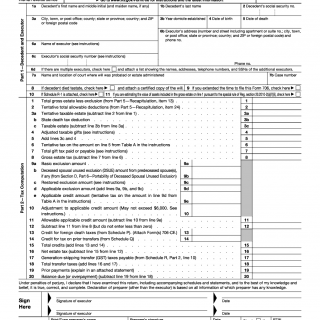IRS Form 706. United States Estate (and Generation-Skipping Transfer) Tax Return
Form 706, also known as the United States Estate (and Generation-Skipping Transfer) Tax Return, is a form that is used to report the transfer of assets from a deceased person's estate to their beneficiaries. The main purpose of this form is to calculate the estate tax owed and to ensure that the transfer of assets is done in compliance with the law.
The form consists of several parts, including general information about the decedent and the estate, a schedule of assets, and a computation of tax. There are also additional sections for certain other information, such as information about any generation-skipping transfers.
When completing Form 706, it is important to consider the specific details of the estate, such as the value of the assets being transferred, any deductions or credits that may apply, and any generation-skipping transfers that have occurred. This information will be used to calculate the estate tax owed.
In addition to the form itself, you may need to attach additional documents such as appraisals of assets or documentation of any debts owed by the estate. It is important to keep accurate records and maintain these documents for future reference.
Some examples of when Form 706 might be required include when a person's estate is valued above the estate tax exemption amount, which is currently $11.7 million for individuals and $23.4 million for married couples.
Strengths of Form 706 include its ability to ensure that the transfer of assets is done in compliance with the law and that the correct amount of estate tax is paid. Weaknesses may include the complexity of the form and the need for accurate record-keeping.
Alternative forms or analogues to Form 706 may include state-specific estate tax forms or other federal tax forms such as Form 1041 for income tax returns for estates and trusts. The main difference between these forms is the specific information being reported and the reporting requirements.
To fill and submit Form 706, you can either do so electronically through the IRS e-file system or by mailing a paper form to the appropriate address. Once submitted, the form will be stored electronically by the IRS for future reference and auditing purposes.

